On April 15, 1747, the London
General Advertiser printed the text of a speech said to have been given by a woman, Polly Baker, at her trial. She had just given birth to her fifth child, was unmarried, and had been charged with having sexual intercourse out of wedlock.
Polly Baker readily admitted her guilt but argued that the law itself was unreasonable. Why was she being punished, she asked, while the men who committed the crime with her were let off scot free? According to the article, Polly's argument so moved the judges that one of them asked her hand in marriage the next day.
Polly Baker's speech became a popular sensation, and it quickly "went viral" (to use a modern phrase). Within days, the text of it had been reprinted by other British newspapers, and it was then reproduced by monthly magazines, such as the
Gentleman's Magazine. The text subsequently circulated widely throughout Europe and America.
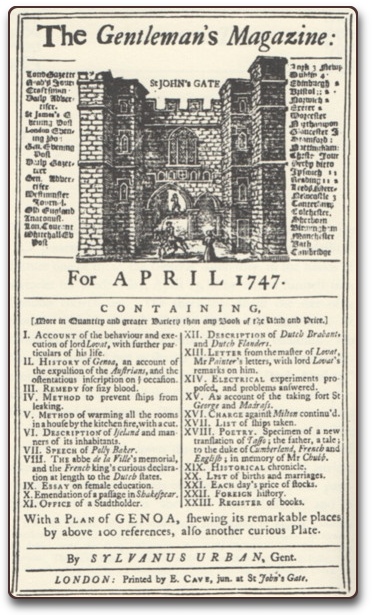
The title page of the
Gentleman's Magazine with Polly Baker's speech listed in the table of contents (middle of the left column)
The story of the trial of Polly Baker was widely believed to be true. But it was not. There was no such woman or trial. Thirty years later, Benjamin Franklin admitted he had written the speech. It's not clear how he managed to insert the article into the
General Advertiser. But almost all scholars accept that he wrote it. His intention appears to have been to draw attention to the unfairness of the law which punished mothers, but not fathers, for having children out of wedlock. Franklin himself had fathered a son out of wedlock. The hoax was also Franklin’s first criticism of the penal system, a subject which he devoted much attention to in later decades.
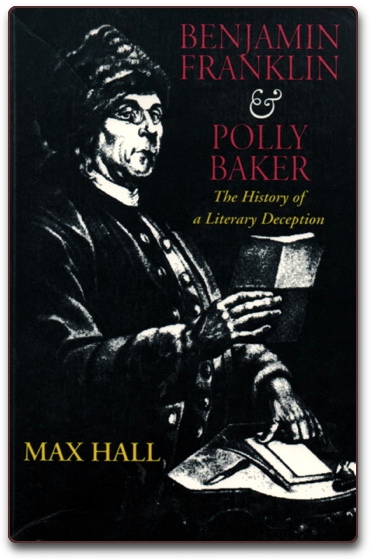
Max Hall's book length study (published 1960) of the Polly Baker case.
Available from
Amazon.


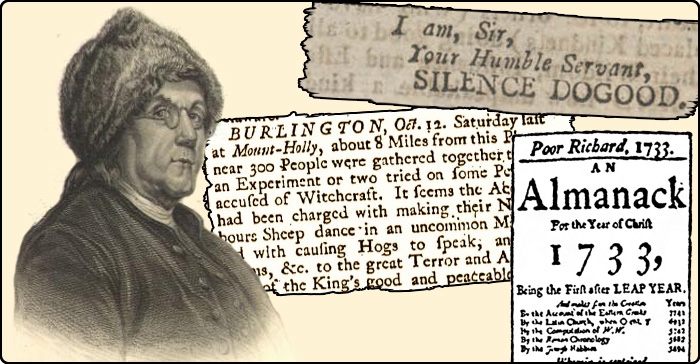
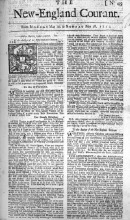 Between April and October 1722 a series of letters appeared in the New England Courant written by a middle-aged widow who called herself Silence Dogood. In her correspondence she poked fun at various aspects of life in colonial America, such as the drunkenness of locals, religious hypocrisy, the persecution of women, the fashion for hoop petticoats, and particularly the pretensions of Harvard College.
Between April and October 1722 a series of letters appeared in the New England Courant written by a middle-aged widow who called herself Silence Dogood. In her correspondence she poked fun at various aspects of life in colonial America, such as the drunkenness of locals, religious hypocrisy, the persecution of women, the fashion for hoop petticoats, and particularly the pretensions of Harvard College.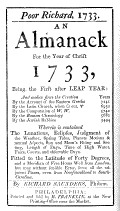 Benjamin Franklin published a highly successful, yearly almanac from 1732 to 1758. He called it Poor Richard’s Almanac, adopting the literary persona of "Poor" Richard Saunders, who was supposedly a hen-pecked, poverty-stricken scholar.
Benjamin Franklin published a highly successful, yearly almanac from 1732 to 1758. He called it Poor Richard’s Almanac, adopting the literary persona of "Poor" Richard Saunders, who was supposedly a hen-pecked, poverty-stricken scholar. 
 On October 19, 1752, the Pennsylvania Gazette published a brief description of an experiment recently conducted by Benjamin Franklin. Franklin, the article said, had flown a kite in a thunderstorm, causing electricity to be conducted down the line of the kite and electrifying a key tied to it. This demonstrated that lightning, as many had speculated, was a form of electricity.
On October 19, 1752, the Pennsylvania Gazette published a brief description of an experiment recently conducted by Benjamin Franklin. Franklin, the article said, had flown a kite in a thunderstorm, causing electricity to be conducted down the line of the kite and electrifying a key tied to it. This demonstrated that lightning, as many had speculated, was a form of electricity. In 1782 a shocking letter was printed in the Supplement to the Boston Independent Chronicle. It alleged that Indian warriors were sending hundreds of American scalps as war trophies to British royalty and Members of Parliament. The scalps included those of women, as well as young girls and boys.
In 1782 a shocking letter was printed in the Supplement to the Boston Independent Chronicle. It alleged that Indian warriors were sending hundreds of American scalps as war trophies to British royalty and Members of Parliament. The scalps included those of women, as well as young girls and boys.
Comments